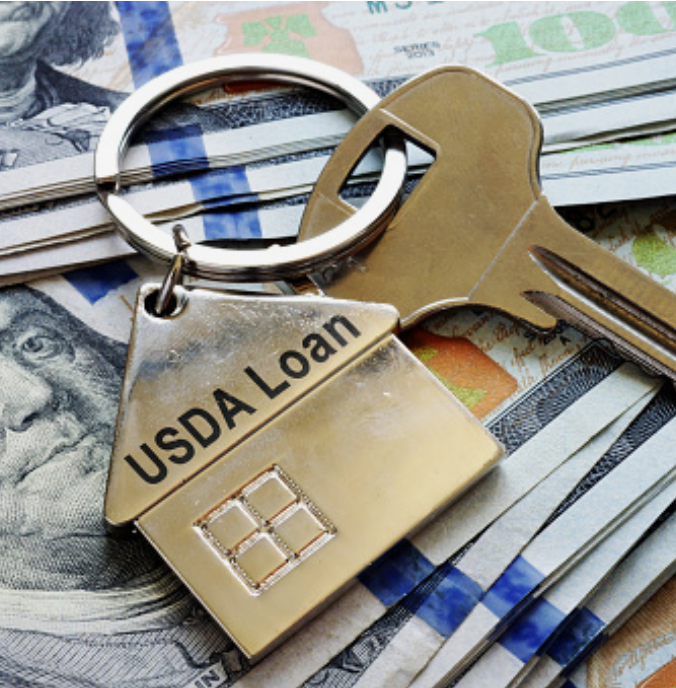USDA home loan is a low-interest mortgage and house renovation loan that low-income rural and suburban homeowners can get without a down payment. Issued through the United States Division of Agriculture (USDA), these single-family mortgages are aimed to assist customers with moderate incomes and limited credits (so they access their homes). They are also designed to stimulate the sale of significantly less valuable properties than those in your local market. Even in today’s real estate market, if you’re switching to a suburban or rural area, a USDA home loan can help you get your home.
How does a USDA home loan function?
The USDA Rural Development Home Loan Program provides financing to support low and average-income consumers with purchasing residences. To qualify, candidates must search for funding to buy a home in a suitable suburban or rural area. The assets must be intended for use as your primary residence, and the borrowers’ earnings must be below certain limits based on local average incomes.
The country’s densely populated metropolitan areas are excluded from this funding program. Therefore, it allows 97% of the U.S. geographic area to get eligible for USDA home loan. The USDA Self Assessment Tool can help you identify your eligibility in states—where you want to finance the property.
Types of USDA Home Loan
There are primarily three types of USDA home loan:
1) Section 502 Primary Mortgages
It is a type of USDA home loan, which is granted to low and below-average income borrowers. The mortgage proceeds can be used to renovate, purchase or relocate a house, or make site changes, including the installation of water and other sewage solutions.
The current mortgage rate for direct housing loans is near 2.5%. However, the interest rate could be reduced to 1% if modified through down payment assistance, a grant that tentatively reduces monthly debits. Typically, mortgage installment periods don’t exceed 33 years. But 38-year loans are available to beneficiaries who can’t make monthly repayments on the 33-year loan.
The property you intend to finance with Section 502 direct funding must meet specific eligibility requirements, including charges. Since property appraisal values vary extensively by geography, each region has its price cap for acquisitions made using Section 502 lendings.
2) Single-Family Home Repair Loans and Grants
This USDA home loan initiative is also known as the Section 504 House Repair Program. It provides loans to homeowners who wish to renovate or improve their property. This program is open to candidates with revenues below 50% of the local mean income who won’t obtain inexpensive credit elsewhere to finance improvements on apartments they occupy (no leasing properties or villas).
Single Family Home Repair Mortgages provide loans of approximately $20,000 at a fixed mortgage rate of 1% with a repayment period of two decades.
The Single Family Home Renovation Grant allows candidates aged 62 and older who can’t pay for home rehabilitation loans to receive up to $ 7,500 for projects that will make their homes more secure. Candidates can apply for various grants over time, but the total funding won’t exceed $ 7,500. The grant must be returned if the apartment is sold within three years of the loan being issued.
Homebuyers who can repay some but not all of the repayment of a Section 504 lending are eligible to get a combination of loans and grants to finance qualified house improvement projects with total funding of as much as $27,500.
3) USDA Guaranteed Home Loans
Unlike direct loans, USDA loans are insured by USDA-approved lenders, including credit unions and banks. Additionally, this lending program promises creditors 90% coverage of any loan provided under its regulations if the borrower defaults on a loan. This enables financiers to offer borrowers low-interest loans with no down payment and exceptional credit ratings.
To acquire this type of mortgage, you need to communicate with a USDA-approved lender. Although many lenders provide USDA funding, it’s best to work with a company that administers these mortgages.
How to be eligible for a USDA home loan
You can apply for a USDA home loan if you fulfill the following requirements:
- You are a U.S. resident or permanent homeowner.
- The property you want to purchase or refurbish is located in the appropriate suburban or rural area; its market cost falls below the designated limits of a site, and it will work as your primary residence.
- You can show a reliable and stable income—sufficient to manage the monthly mortgage settlements.
- Your pay is below the average income for your state. Also, you meet specific terms depending on the loan type and the local median income.
- For direct USDA loans, the property you intend to purchase must be less than 2,000 square feet in area.
- You don’t possess another house.
What credit rating do I need to get a USDA home loan?
The USDA does not require fixed credit ratings, but most lenders offering USDA loans require a minimum of 640 points. Furthermore, 640 is the minimum credit rating you will need to get authorization through the USDA automatic credit underwriting system.
However, suppose your credit rating is below 640, or you do not have an established credit history. In that case, you may still qualify for a USDA home loan if your lender evaluates your credit report through a manual registration process.
It generally requires an evaluation of your financial documents, including proof of invoices for at least 12 months. Manual underwriting takes longer than automatic registration and can still result in your mortgage application being declined.
The Bottom Line
If you have a stable but limited income and are interested in purchasing or renovating a suburban or rural home, a USDA Home loan can be a great vehicle to build your own home.
Generated with WriterX.ai — best AI tools for content creation

